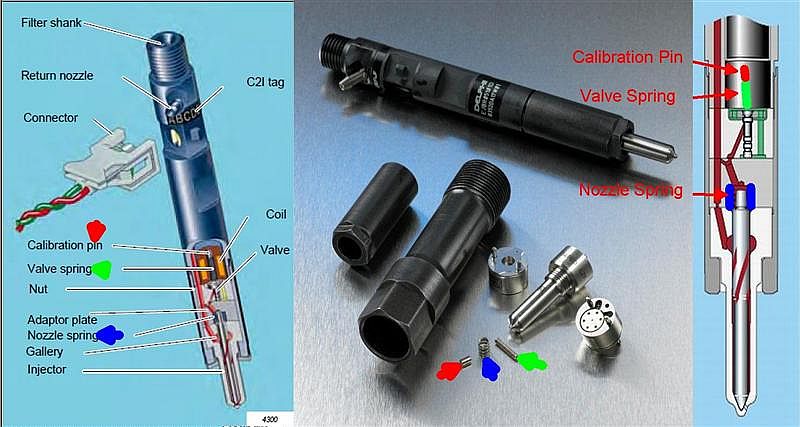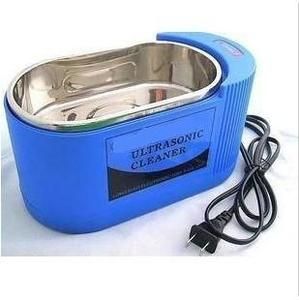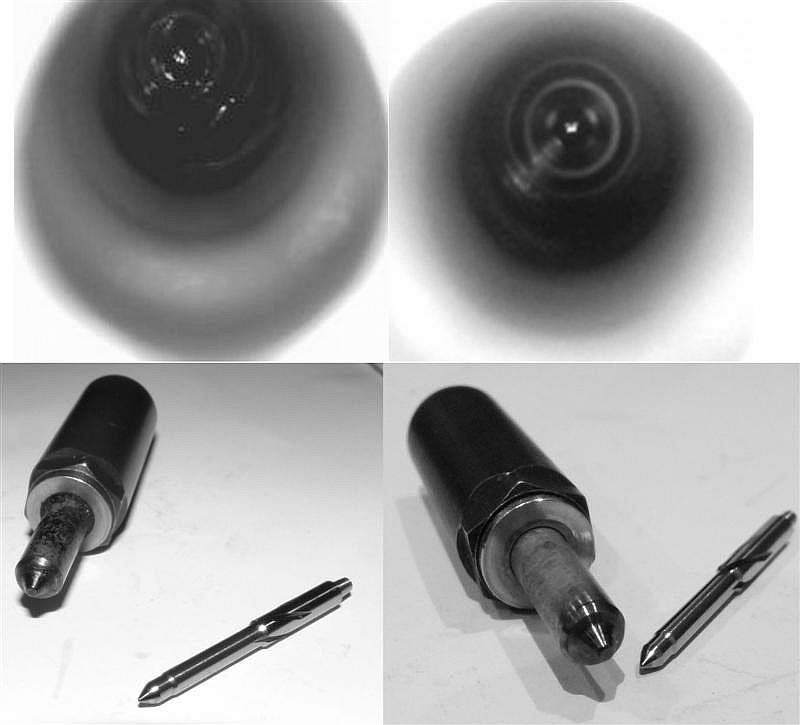Registrations
We now manually approve all new user accounts due to a large influx of spam bots. Accounts are normally approved within 48 hours.
If you need any help with using this Wiki, please ask here: TalkFord.com Wiki Submission Forum
Difference between revisions of "Injector Cleaning"
Peter scott (Talk | contribs) |
Peter scott (Talk | contribs) |
||
| Line 38: | Line 38: | ||
Note the sequence of parts. | Note the sequence of parts. | ||
| − | Working up from the nozzle there is: | + | Working up from the calibration pin down to the nozzle there is: |
| − | + | Calibration pin. | |
| − | + | Valve spring | |
| − | + | Valve | |
Valve body | Valve body | ||
| − | + | Adaptor plate | |
| − | + | Injector spring | |
| + | |||
| + | Injector needle | ||
| − | |||
The calibration pin may remain in the solenoid half of the injector but be sure that it doesn't drop out and get lost. | The calibration pin may remain in the solenoid half of the injector but be sure that it doesn't drop out and get lost. | ||
Revision as of 11:50, 13 February 2013
|
Overview Guide | |
| Ford Model: | Mondeo_Mk3 |
|---|---|
| Petrol/Diesel: | Diesel |
| Estimated Cost: | ? |
| Difficulty? | Easy/Medium |
| How long does this take? | ? |
Procedure
To open up the injector turn it upside down gripping the two flats in a vice so that the nozzle is pointing vertically upwards then apply a socket or ring spanner to the nozzle nut. Once you've slackened it lay it horizontally on a piece of clean white paper (so that you can easily see the small parts)
The passages and jets in the injectors are small and easily blocked and the clearances between moving parts are also very small so it is essential that you work in a clean environment.
Note the sequence of parts.
Working up from the calibration pin down to the nozzle there is:
Calibration pin.
Valve spring
Valve
Valve body
Adaptor plate
Injector spring
Injector needle
The calibration pin may remain in the solenoid half of the injector but be sure that it doesn't drop out and get lost.
Whilst it's important that all the above parts are clean and free from any grit or fluff I think that the most important part to get clean is the inside of the injector nozzle. This area is likely to have carbon build-up that may cause less than perfect sealing of the injector needle. Due to the fine tolerances of injector parts it's important that you don't attempt any scraping or other abrasive cleaning so that the original C2i calibration codes can be re-used.
The only way of cleaning the parts effectively is to use an ultrasonic cleaning tank with a suitable cleaning fluid. I bought a small second hand industrial tank that has an 80 watt power rating. There are some relatively cheap tanks available new that claim a 60 watt power.
Clean all the parts except for the upper body of the injector that contains the solenoid and electrical connector.
The correct cleaning fluid is important. You have to use water based fluids for ultrasonic cleaning because at a micro level high temperatures are generated. I used this fluid diluted 10 parts water to one part fluid. http://mistralie.co....s-machine-parts
http://www.youtube.com/watch?feature=player_embedded&v=BNhOQ4GxwXc
The pictures on the left are before and those on the right after 15 minutes in the cleaning tank. The difference isn't dramatic but I think you can see an improvement looking into the nozzle to where the needle sits.
My injector needle does show signs of wear where it seats in the nozzle but there doesn't appear to be much scoring down the sides.
When re-assembling the injector, the locating pins in the adaptor plate and valve body should ensure correct alignment of the parts.




 Your Privacy Choices
Your Privacy Choices